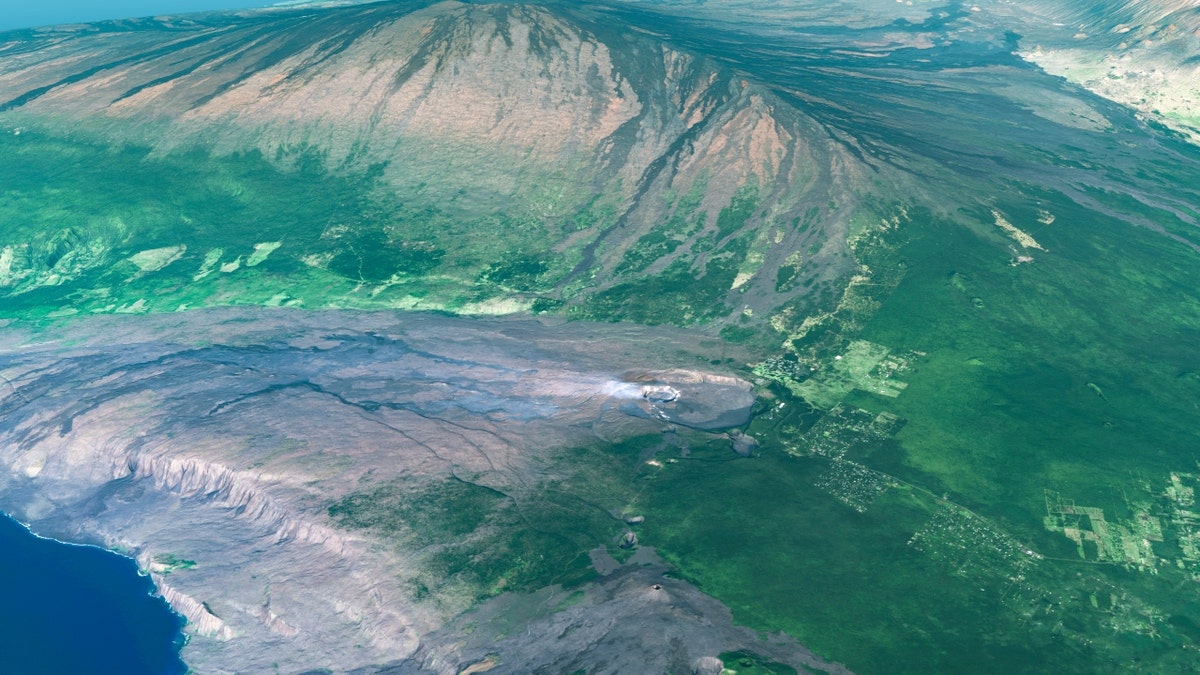Hawaii's Mauna Loa: Lava erupts, creates massive flows in aerial video
Video shot by Paradise Helicopters Wednesday shows Hawaii's Mauna Loa volcano erupting, sending lava high into the air.
An endangered seabird, a ʻakēʻakē fledgling, was caught on camera at Hawaii Volcanoes National Park for the first time.
The National Park Service said the nocturnal seabird was shown emerging from its high-elevation burrow on Mauna Loa around a month before the volcano erupted.
The burrow was located by Slater, one of the Hawaii detector dogs, and under the guidance of trainer and handler Michelle Reynolds.
After Slater discovered the nests, wildlife cameras were installed to monitor the burrows.
BIDEM ADMIN. NAMES NEVADA TOAD ENDANGERED, HAMPERING CONSTRUCTION OF GEOTHERMAL PLANT
This is the first confirmed ʻakēʻakē nest identified in Hawaii Volcanoes National Park, according to Charlotte Forbes Perry, a biologist with the University of Hawaii Pacific Cooperative Studies Unit.

A fluffy seabird chick peeking out of its rocky ground burrow The first ʻakēʻakē fledgling documented in Hawaii Volcanoes National Park emerges from its burrow. (NPS Photo from wildlife camera)
"Biologists in the park have known of the presence of ʻakēʻakē on Mauna Loa since the 1990s. In 2019, ʻakēʻakē burrow calls were recorded during acoustic monitoring which indicated nesting. The lack of visual signs like guano at their nest sites make them extremely hard for humans to locate," Forbes Perry said.
Forbes Perry and her team study seabirds in the park under a permit from the U.S. Fish & Wildlife Service.
The nests at Hawaii Volcanoes National Park and the U.S. Army Garrison Pōhakuloa Training Area are the only documented ʻakēʻakē nests in Hawaii.

This is a 3D-enhanced satellite image of Mount Kilauea on the Big Island of Hawaii. ((Photo enhanced by maps4media via Getty Images))
HAWAII'S MAUNA LOA: JAW-DROPPING IMAGES SHOW VOLCANO'S ERUPTION FROM SPACE
The park service said the burrows were not threatened by the current eruption of Mauna Loa and are protected within the park's 644-acre cat-proof fence.
Threats in Hawaii include predation by non-native barn owls, cats and mongoose, as well as disorientation from artificial lights.

In this aerial view, lava fissures flow downslope from the north flank of Mauna Loa Volcano as it erupts on November 30, 2022, near Hilo, Big Island of Hawaii, Hawaii. ((Photo by Andrew Richard Hara/Getty Images))
Also known as the band-rumped storm petrel, the birds are small and are ash black with a wide white band on their tail.
They nest on isolated islands but spend the rest of their lives at sea.
CLICK HERE TO GET THE FOX NEWS APP
The global population is estimated to be about 150,000 individuals, with around 240 pairs known in Hawaii, according to the American Bird Conservancy.




















